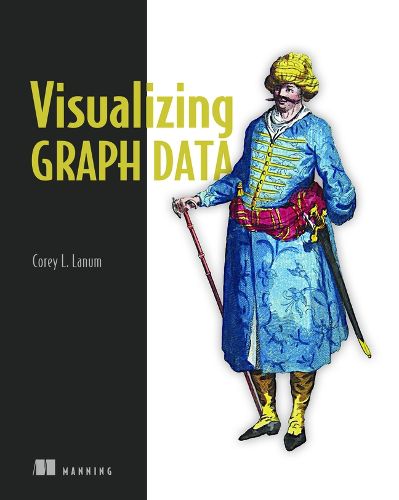Readings Newsletter
Become a Readings Member to make your shopping experience even easier.
Sign in or sign up for free!
You’re not far away from qualifying for FREE standard shipping within Australia
You’ve qualified for FREE standard shipping within Australia
The cart is loading…






One of the most powerful ways to understand data is to recognize the
ways in which each datum-person, product, etc-connects to another.
Visualizing these graphs makes it possible to literally see the
connections. The graph model consists of data elements, called nodes,
and edges, which are the relationships between these nodes. Graphs
make the relationships between the data elements a core part of the
data structure, which means you can better comprehend the meaning of
your data. And visual data is easier for everyone to understand.
Visualizing Graph Data teaches readers not only how to build graph
data structures, but also how to create their own dynamic, interactive
visualizations using a variety of tools. This book is loaded with
fascinating examples and case studies to show the real-world value of
graph visualizations. It begins by teaching fundamental graph concepts
and techniques used to visualize graph data. Next, readers drill down to
learn how to create their own useful visualizations, as well as
additional tools. Readers also learn how to model data, create the best
graphs for their particular audience, handle big data, and depict
temporal and spatial data. By the end of this book, readers know to ask
the right questions of data to create powerful visualizations.
Key Features:
* Real-world case studies
* Teaches techniques for creating effective visualizations
* Shows fundamental visualization concepts
* Includes tutorials using the best visualization tools
AUDIENCE
A basic understanding of RDBMS systems is assumed. No previous
knowledge of graph databases required.
ABOUT THE TECHNOLOGY
The graph way of thinking about data is becoming more and more popular
as people value the relationships between bits of data as much as the data
themselves. Key to understanding the complex structure of connected data is
being able to visualize those connections.
$9.00 standard shipping within Australia
FREE standard shipping within Australia for orders over $100.00
Express & International shipping calculated at checkout
One of the most powerful ways to understand data is to recognize the
ways in which each datum-person, product, etc-connects to another.
Visualizing these graphs makes it possible to literally see the
connections. The graph model consists of data elements, called nodes,
and edges, which are the relationships between these nodes. Graphs
make the relationships between the data elements a core part of the
data structure, which means you can better comprehend the meaning of
your data. And visual data is easier for everyone to understand.
Visualizing Graph Data teaches readers not only how to build graph
data structures, but also how to create their own dynamic, interactive
visualizations using a variety of tools. This book is loaded with
fascinating examples and case studies to show the real-world value of
graph visualizations. It begins by teaching fundamental graph concepts
and techniques used to visualize graph data. Next, readers drill down to
learn how to create their own useful visualizations, as well as
additional tools. Readers also learn how to model data, create the best
graphs for their particular audience, handle big data, and depict
temporal and spatial data. By the end of this book, readers know to ask
the right questions of data to create powerful visualizations.
Key Features:
* Real-world case studies
* Teaches techniques for creating effective visualizations
* Shows fundamental visualization concepts
* Includes tutorials using the best visualization tools
AUDIENCE
A basic understanding of RDBMS systems is assumed. No previous
knowledge of graph databases required.
ABOUT THE TECHNOLOGY
The graph way of thinking about data is becoming more and more popular
as people value the relationships between bits of data as much as the data
themselves. Key to understanding the complex structure of connected data is
being able to visualize those connections.